 Go to Summary
Go to Summary
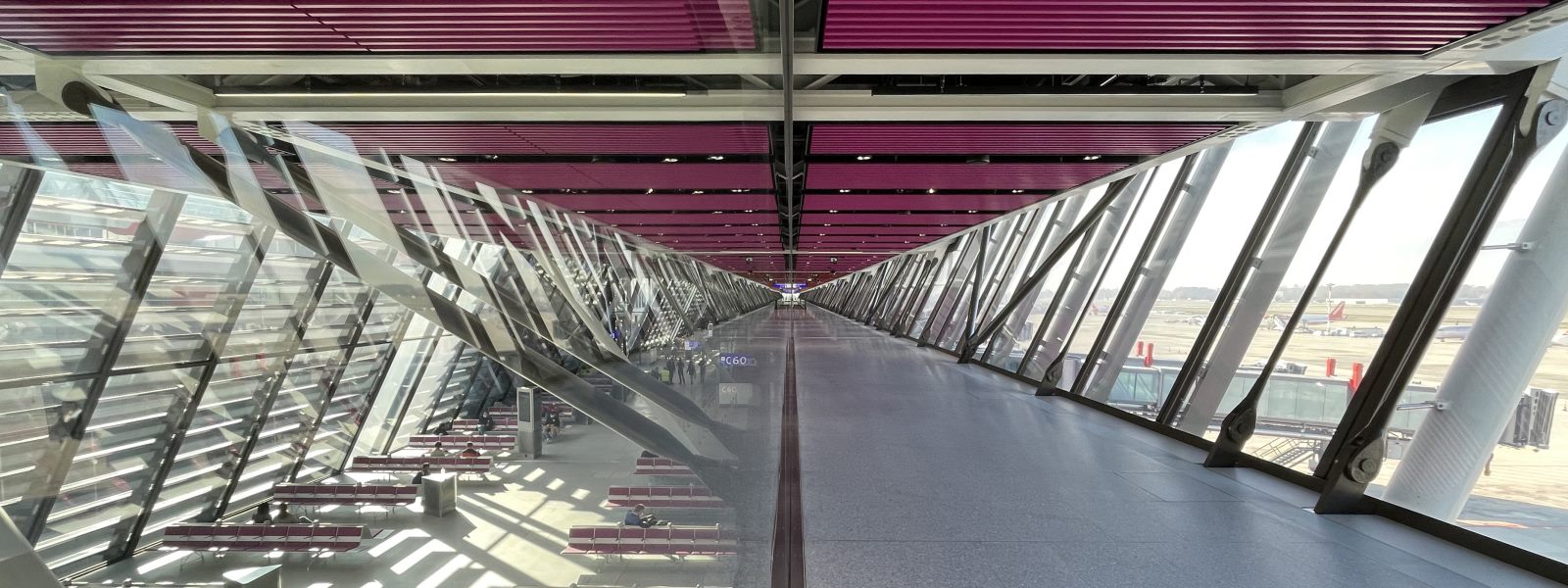
Focus on major projects
2022 was a year of recovery in terms of investing in the airport’s infrastructure. One sign of this is the fact that none of the projects scheduled in the general plan was frozen during the year. The COVID-19 pandemic had a major impact on the works under way at the airport in 2021. In response to the financial crisis, almost 120 scheduled projects were frozen. This allowed investment to be cut by CHF 90 million in 2021 and 2022.
140 projects were carried out in 2022 (compared to 75 in 2021), representing an investment of some CHF 60 million. The completion of the East Wing and the baggage sorting logistics centre (BLC) accounted for almost 60% of this.
The East Wing: one year under its belt
The East Wing came into service on 14 December 2021, and 2022 was the first full year in operation. Mainly intended for long-haul and non-Schengen flights, it has already welcomed 4.48 million passengers; a weekly record was set right at the end of the year with over 96,000 passengers.
On 13 October a large-scale solar installation on the roof came on stream. 6,700 m2 of photovoltaic panels will generate 1.5 GWh of electricity annually, enough to meet the consumption of the 40,000 m2 building.
East Wing
Solar Power Plant (french)
The installation makes the East Wing the third-largest solar roof in the Canton of Geneva installed by SIG, after the Palexpo (15,000 m2) and the Aïre water treatment facility (7,200 m2). It also underscores what an exemplary building this is expected to be from an energy point of view, as it was designed to be a sustainable model.
The first year of operations was a period for fixing teething problems. Improvements were also made to how the walkways function and the door opening systems.
GeniLac: work gets under way
2022 saw work start at a key site for the energy transition at the airport: connecting to the GeniLac green district heating network from SIG.
By 2026 the airport will be able to use a sustainable and renewable source to cool and heat its buildings: water from the lake. The solid fuel system will be switched off, saving two million litres of fuel oil per year. Ultimately the airport will cut its carbon dioxide emissions by 60%.
CHF 37 million is being spent to adapt the infrastructure and install new equipment. Genève Aéroport and SIG are working together to build a 3,800 m2 heating centre on the P45. This will have the GeniLac sub-station on one side and two gas boilers on the other as a back-up in case of severe cold or breakdowns.
Work on the new heating centre, known as Central East, started in 2022: SIG is providing CHF 54 million of the financing and Genève Aéroport CHF 7 million. While waiting for it to come on line in 2026, conversion work will be carried out on the existing freight buildings as far as the terminal. New buildings, like the East Wing, will be connected directly to GeniLac.
The airport will be renovating two other heating centres over the period 2023-2024 to complete the network.
Inauguration
Genilac (french)
CAP 2030 embarks on a new stage
The second round of parallel studies for the CAP 2030 project was commissioned in 2022. Three companies have been selected to study this major transformation project for the airport. The winner will be chosen in October 2023.
By way of reminder, CAP 2030 is the first stage and will ultimately make it possible to renovate or reconstruct Terminal 1, which will be more than 70 years old in 2040. By then it will be showing its age. The project will significantly improve efficiency and the way passengers are welcomed. Specifically, it involves building a new 45,000 m2 terminal on the esplanade in front of the main entrance to T1. Operating activities will be transferred to the new infrastructure after 2032. The existing terminal will then be either rebuilt or renovated: no decision has yet been taken.
The superstructure of the SBB rail station will be demolished beforehand and a new multi-modal platform will emerge. This will allow a major shift in mode share. It will be even easier to access the airport.
At this stage the estimated cost of these two projects for Genève Aéroport is CHF 560 million. The works will be carried out between 2025 and 2032.
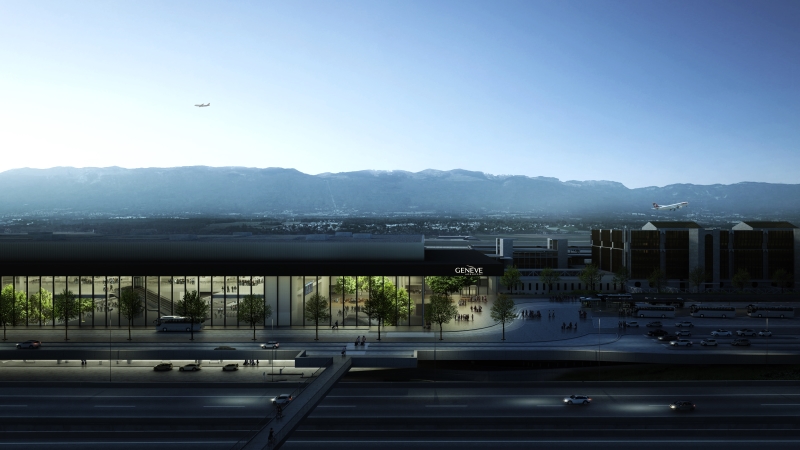
BLC on the move
Work on the new baggage logistics centre (BLC) continued in 2022. The current system needs replacing because much of its equipment is obsolete. The BLC will also meet higher baggage handling requirements and comply with security standards thanks to the latest generation of EDS3 scanners.
Launched in 2019, this is a highly complex project. Apart from the technical challenges, work has to take place while the current baggage sorting system is in operation. The building shells are now almost completed and 80% of the baggage carousels for arrivals are in place. More than half of the new check-in desks in the main terminal have been installed and 60% of the conveyor belts have been finished. Eight new EDS3 scanners have already been installed and will be tested in the first quarter of 2023. The airport IT teams have installed the control room, put up the monitor wall and implemented new operating procedures.
The BLC project has fallen one and a half years behind schedule since it started, mainly due to the COVID-19 pandemic. Work was also interrupted for over three months in August 2022 because one of the contractor’s sub-contractors was barred from the site. Irregularities in pay rates and working hours affecting 50 or so employees were discovered. Genève Aéroport immediately suspended the company and the Cantonal Inspection and Labour Relations Office (OCIRT) was brought in.
As a consequence, the scanners will be fitted late, in January 2024. Mitigating measures will be taken in coordination with the Federal Office of Civil Aviation (FOCA). The new baggage sorting logistics centre will be finished at the end of 2024.
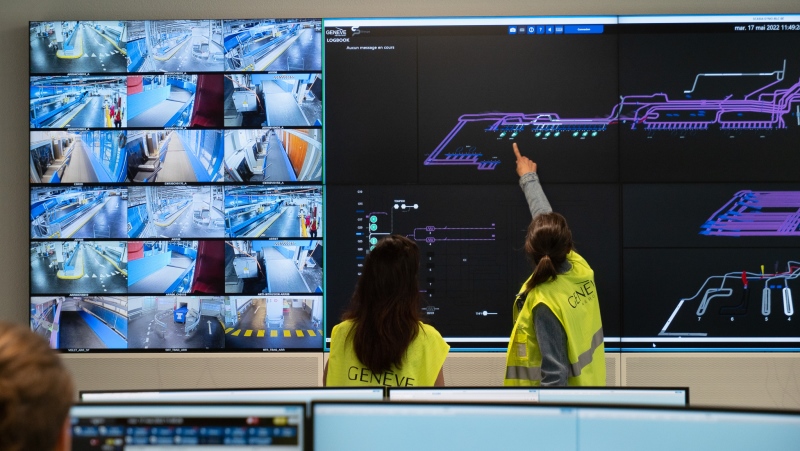
“Pencil” air intake moved
Work on moving the main air intake for Terminal 1 got under way in October 2021. Known as “the pencil”, this went through the middle of the building on three levels. Hence passenger flows were disrupted and usable space taken up. The project also improves the thermal envelope by removing thermal bridges.
Completed in July 2022, the works freed up 108 m2 of space. At the same time, three air intakes were added on the southern exterior façade of Terminal 1.
CSC+ made permanent
The CSC+ additional security check, originally meant to last two years, will finally be made permanent. This was built on the western part of the platform in 2017 to cope with peak passenger flows at the main security check in Terminal 1.
A decision has been taken to retain it and bring it up to standard. It will be available for use on an occasional basis when there are:
- Works at the other security checks
- Peak passenger flows
- Operations by the explosives detection, removal and neutralisation team (NEDEX) in Terminal 1
CSC+ will be operational from March 2023.
Satellite 10 extension
The new satellite 10 will be unveiled in 2027. The feasibility study for the extension to this infrastructure was approved on 19 September 2022. The satellite came into service in 2008, having been designed as a bus gate; it is used for aircraft parked on the tarmac that can only be reached by bus. It has two levels of departure lounges, for Schengen and non-Schengen flights.
The works serve several purposes:
- To create five more departure lounges
- To restructure the customs zones and improve working conditions
- To act as back-up when renovation works start on satellites 20, 30 and 40 in 2029
- To create four walk in/walk out positions
Satellite 10 covers 6,120 m2 and will ultimately be able to accommodate over 2,000 passengers per hour. Work will start at the end of 2024 and the building will move back into operation in stages from 2027 onwards.
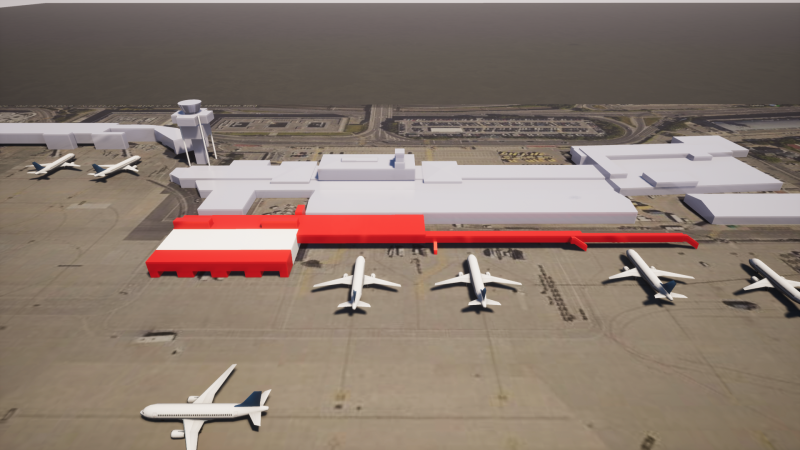
Satellite 10 extension project in 2027.
Renovating the gantries
In 2024 some of the concrete slabs on the tarmac will have to be replaced. The airport has two metal gantries to carry out this delicate task. The first one lifts up the old slab and removes it once it has been loosened; the second puts the new slab in place – which may weigh as much as 180 tonnes. The two pieces of equipment used for the job are 50 years old, so it has been decided to fully refurbish them. Four new remote controlled trailers were acquired this year to add to the facilities so the gantries can be moved.
Creating P41
The plans for P41 were approved this year. The new car park will offer passengers 532 spaces over four levels, replacing the current P14 (140 spaces) underneath hall 6 in Palexpo. It will be about five minutes’ walk from the main terminal. The project will cost CHF 20.5 million and be in service in mid-2025.
Digital transformation continues
Despite the COVID crisis the digital transformation of the airport continues and key projects were implemented to ensure operations remain viable.
Making the passenger journey easier
In 2022 the airport completed the airport passenger systems project (Project SPA) launched a year previously. This mainly involved renewing the technology systems that manage the passenger process at each stage, from check-in to boarding.
The self bag drop (SBD) was updated for Lufthansa/ Swiss and passengers now see the system as they move through their journey. As part of the project, the airport is planning a major expansion of this system to other companies, starting with easyJet in 2023.
For going through security, the airport has installed automatic gates to check boarding passes, which improves flows at this stage.
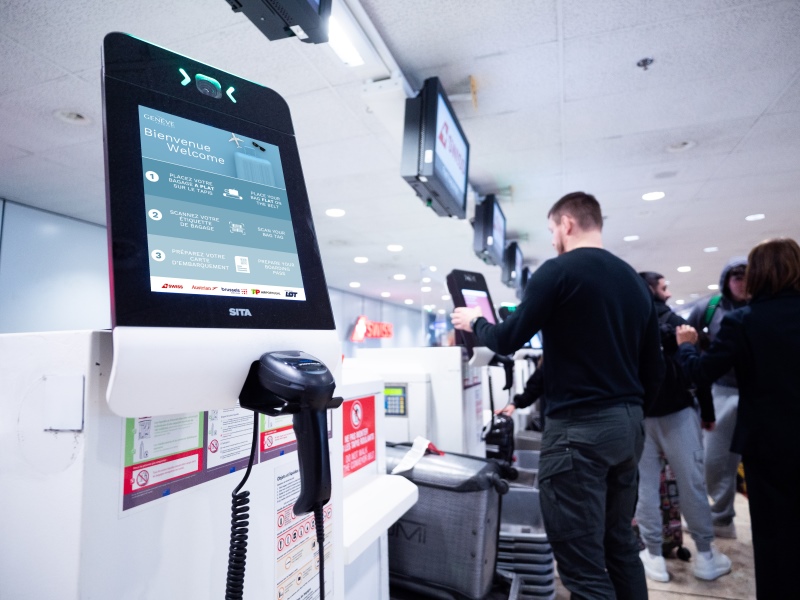
In the priority lane, accessible by buying a ticket or subscription, a double scan functionality allows tickets and boarding cards to be checked at the same time.
To provide better information for passengers, the airport has installed a new automatic announcement system which now includes Arabic. In the medium term this additional service will be supported by a total redesign of the acoustics within the airport, the car parks and the satellites.
In terms of communication the airport has installed a digital signage system that allows multimedia content to be broadcast simply and efficiently throughout the terminal (at check-in screens, when going through security, at the visitor centre, etc.).
Real-time management
Less apparent to passengers but essential to airport activities, the foundations have been laid for
Project Airport Operation System (AOS). This moved into the project phase in 2022 and should be in production in 2024; it aims to manage the main airport operations effectively and efficiently in real time. These include managing aircraft flow, parking stations on the tarmac, planning customer checkin desks, boarding gates and baggage carousels at arrivals, all the way through to posting flight information on screens and mobile apps.
Finally, in early 2022 the fire and rescue response team replaced their IT system with the assistance of the technology division. The equipment was entirely replaced, both the SAGA software (the deployment support system) and the workstations, so as to be able to respond effectively to alarms and mobilise all who need to be called on.
Innovation
Since summer 2022 passengers have been able to use WhatsApp to monitor their flight from Geneva and receive notifications whenever there is new information on the flight selected.

An online food pre-ordering system (F&B) was also tested to evaluate interest in such a service being offered in future.
The airport continued its policy of opening up to regional institutions and the general public with the aim of imagining together the services of tomorrow, by participating in events such as Innovation CRUNCH Time (HEIVD), Smart City Xperience (Open Geneva), Climathon (EIT Climate-KIC) and other.
SuccessFactors
The first part of the SAP SuccessFactors suite was installed in 2022; this will be completed in 2023, making it far easier to manage and analyse Human Resources data.
As well as digitalising HR, the airport also launched a programme to update the digital workplace. Digital workplaces allow staff to access all their working information, either individual (notes, emails) or shared (documents, data downloaded from applications and shared workspaces). By harmonising the technology used (email, instant messaging, social media, HR applications, virtual meeting tools, etc.), the digital workplace makes all communication tools consistent and promotes efficiency and collaborative innovation.

